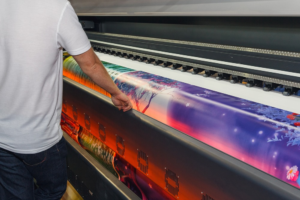Health and hygiene have always been a high point of concern for everyone, across the globe. However, the factors of hygiene started playing a big role in people’s minds once the Covid-19 pandemic hit. With an expansion in the healthcare business and an increase in personal hygiene awareness, the textile industry is embracing sanitation using antimicrobial materials. According to a survey by ResearchAndMarkets, the antimicrobial textile market is predicted to develop at a CAGR of more than 4% between 2020 and 2025.
 How does antimicrobial fabric help the textile industry?
How does antimicrobial fabric help the textile industry?
Antimicrobial fabrics find diverse usages all across the industry. From clothes and hospital scrubs, as well as medical mattress covers, fabric, and upholstery, specially treated textiles can be used extensively to reduce the risk of disease transmission and prevent infection. The fabric used for wound dressing and even for special medical care are all necessarily antimicrobial in nature and support the healing process completely.
Another important application for antimicrobial fabric is military and defense contracting, where it is a component of counter-chemical/biological warfare garments and related equipment. Antimicrobial fabrics also make an excellent choice for footwear and athletic wear, where they help control or prevent odors. Depending on the health and hygiene concerns antimicrobial fabrics find diverse usage across industries ranging from automotive and contract furniture fabric to food packaging, safety gear, air filters, the apparel industry, and more.
Here are a few more applications of the anti microbial fabric:
- These fabrics find diverse usage in household textiles
- In case of commercial applications, these fabrics are included in air filters and food packaging
- The sportswear industry has ample requirements for this fabric all across
- Antimicrobial fabric is also an apt fabric that is used for storage, ventilation and water purification systems.
The industry application for these fabrics is slowly increasing given their importance and relevance in the current times and this is only increasing by the day, given the rising demand for getting health conscious.
Antimicrobial fabric will rule the future
Antimicrobial fabric offers protection against bacteria, mold, mildew, and other hazardous microbes. To develop antimicrobial fabric, the normal textile needs to be treated with a proprietary topical chemical that inhibits the growth of pathogens or by using yarns that are designed to provide inherent microscopic antimicrobial functionality.
In combination, these yarns fight microbes from developing while simultaneously promoting moisture movement to the fabric surface, thereby maximizing comfort and extending the life of the fabric and product life. Antimicrobial fabrics are environment-friendly and skin-friendly too. So, there is no way that they cause any harm to the wearer. This is a special character that is closely taken care of when it comes to antimicrobial fabrics, as it is used to treat wounds etc.
Why antimicrobial fabric is considered to be so important?
Antimicrobial fabrics are considered highly important owing to their nature and how they constantly work towards fighting germs etc. The fabrics by nature work the same way as antimicrobial soaps and sanitizers do — by attacking pathogens on a cellular level to prevent their growth and reproduction. Different chemicals and textiles have different levels of effectiveness. So, depending on the chemical used to treat the fabrics the products can slow the spread of pathogens over time, while others can actively work towards killing bacterium cells on contact.
Antimicrobial compounds can both kill and prevent germ growth. So, depending on the manufacturer’s capacity, and the budget the fabric can be tuned to work in a way that they deem fit to keep germs and diseases at bay. Triclosan, chitosan, cyclodextrin, quaternary ammonium, and other antibacterial agents are used in the textile production process to specially treat fabrics and make them highly potent to fight germs and bacteria growth to keep diseases at bay. Keeping all these factors in mind, we can easily see how these fabrics are on a rise and are set to define the future of the textile industry in due course.


